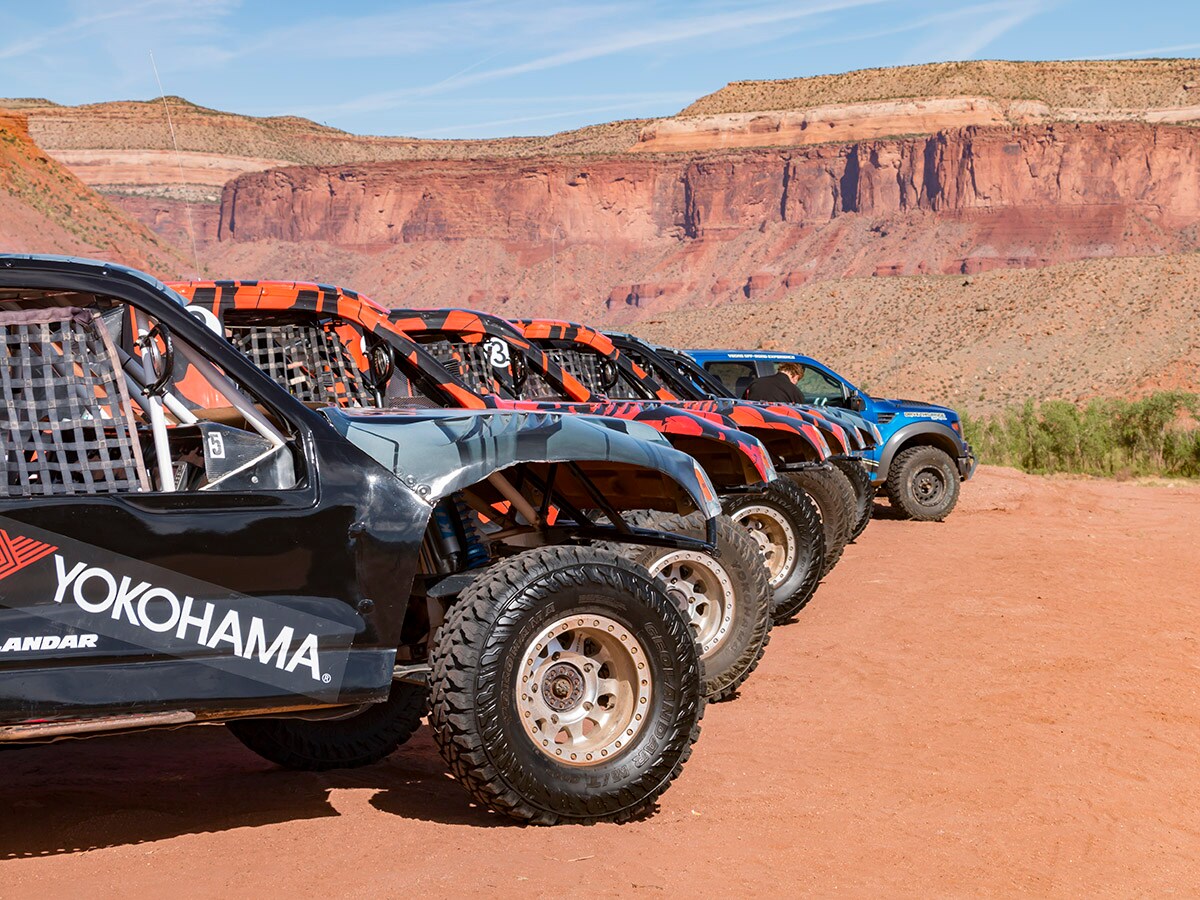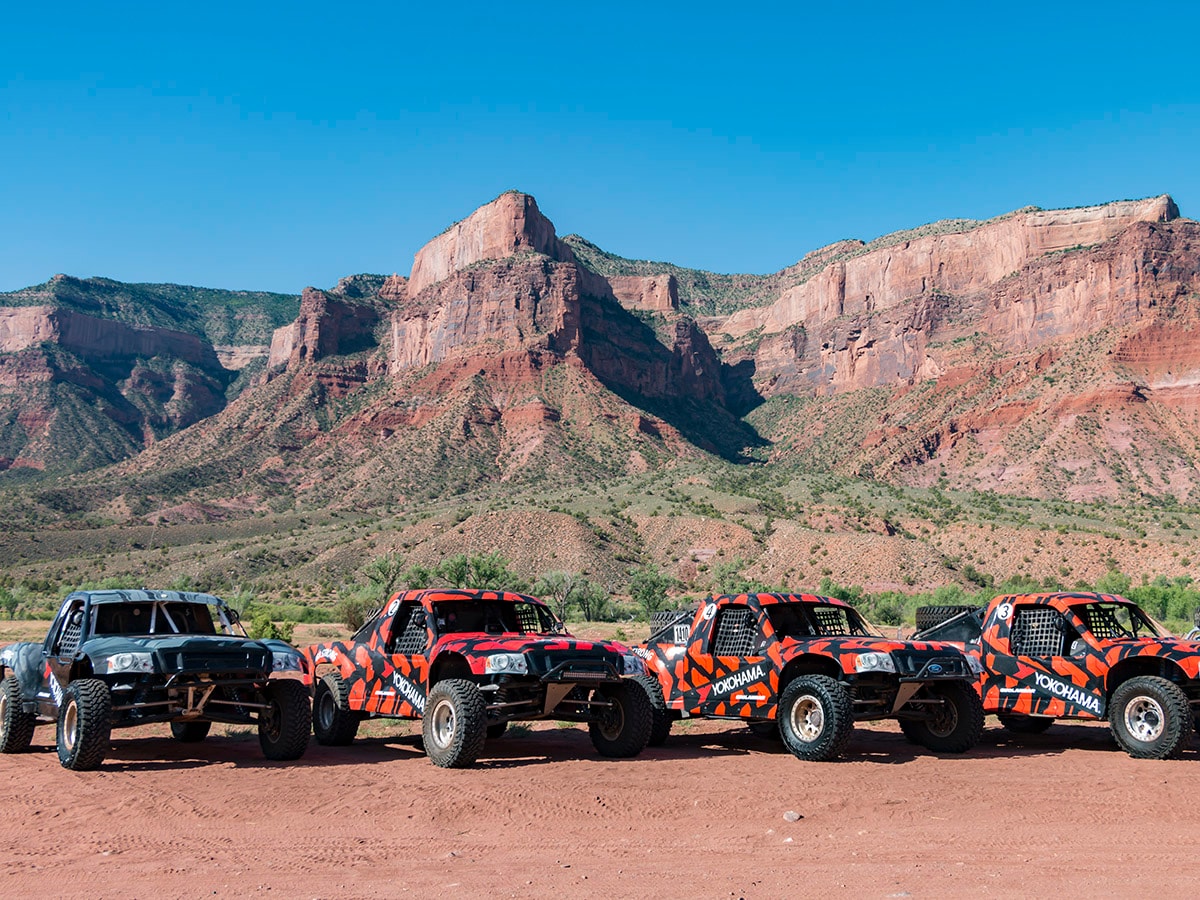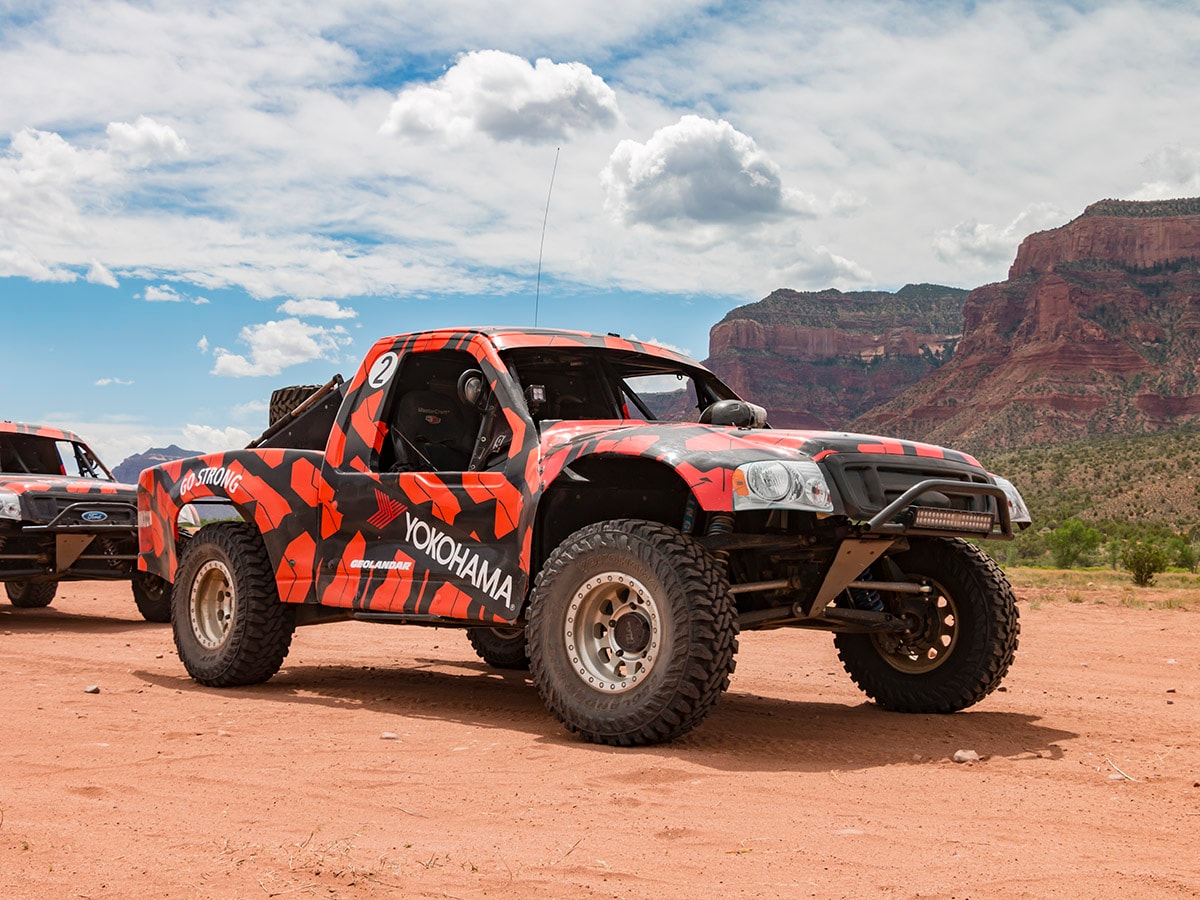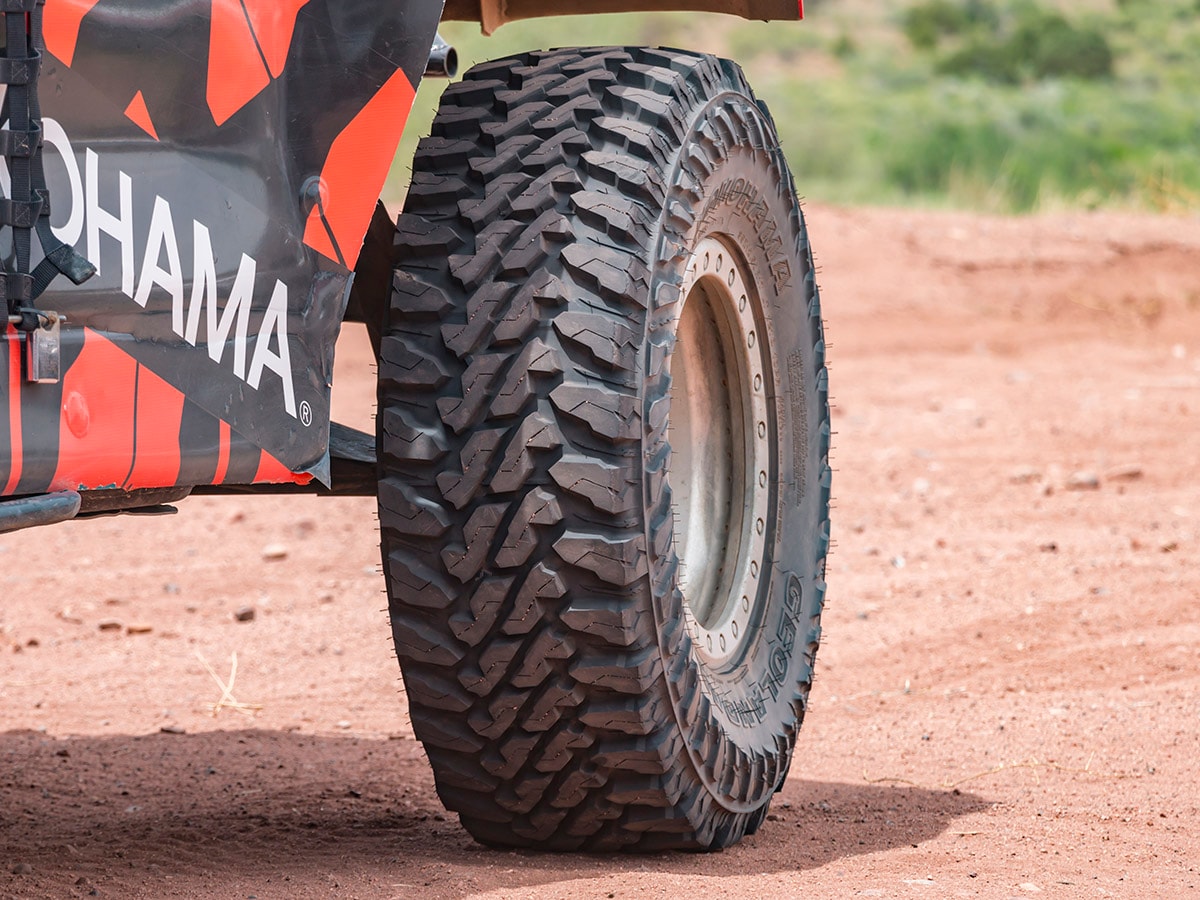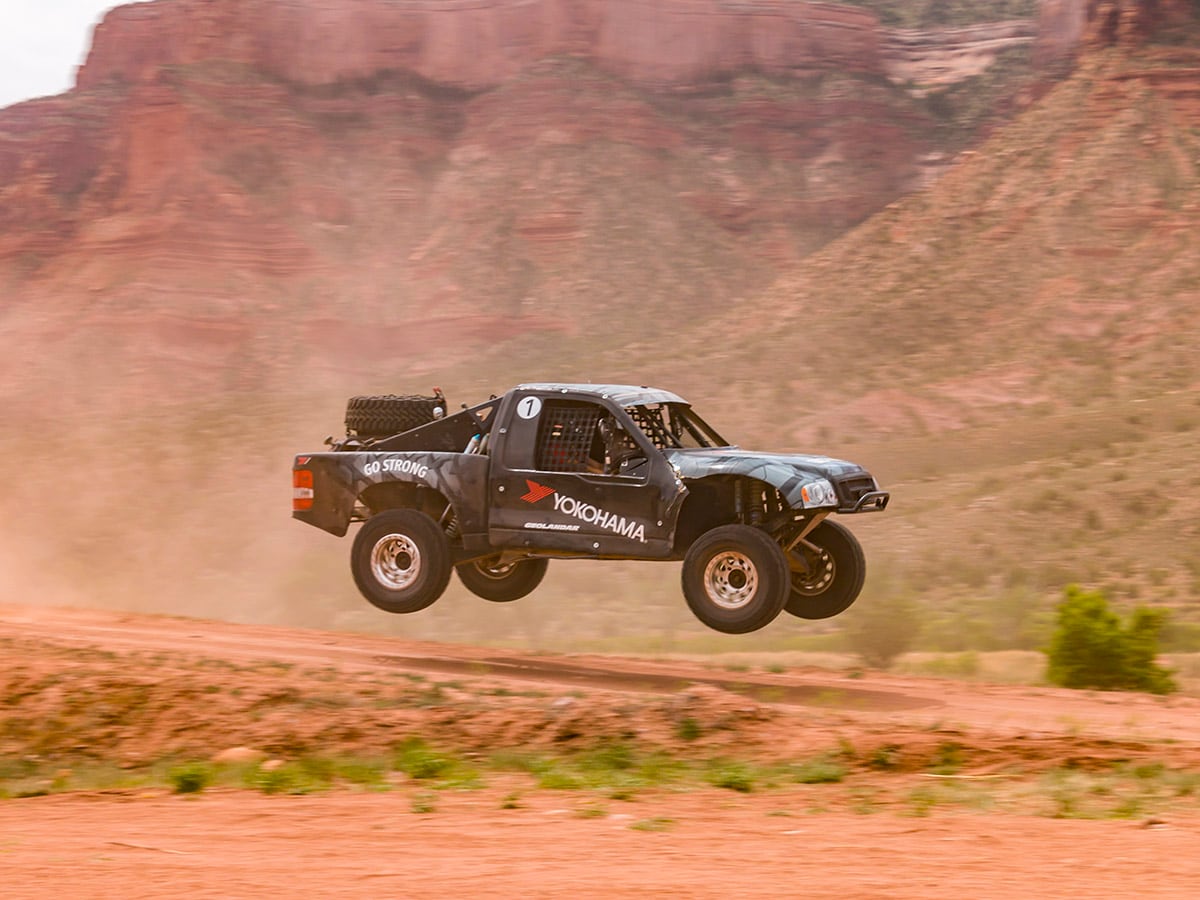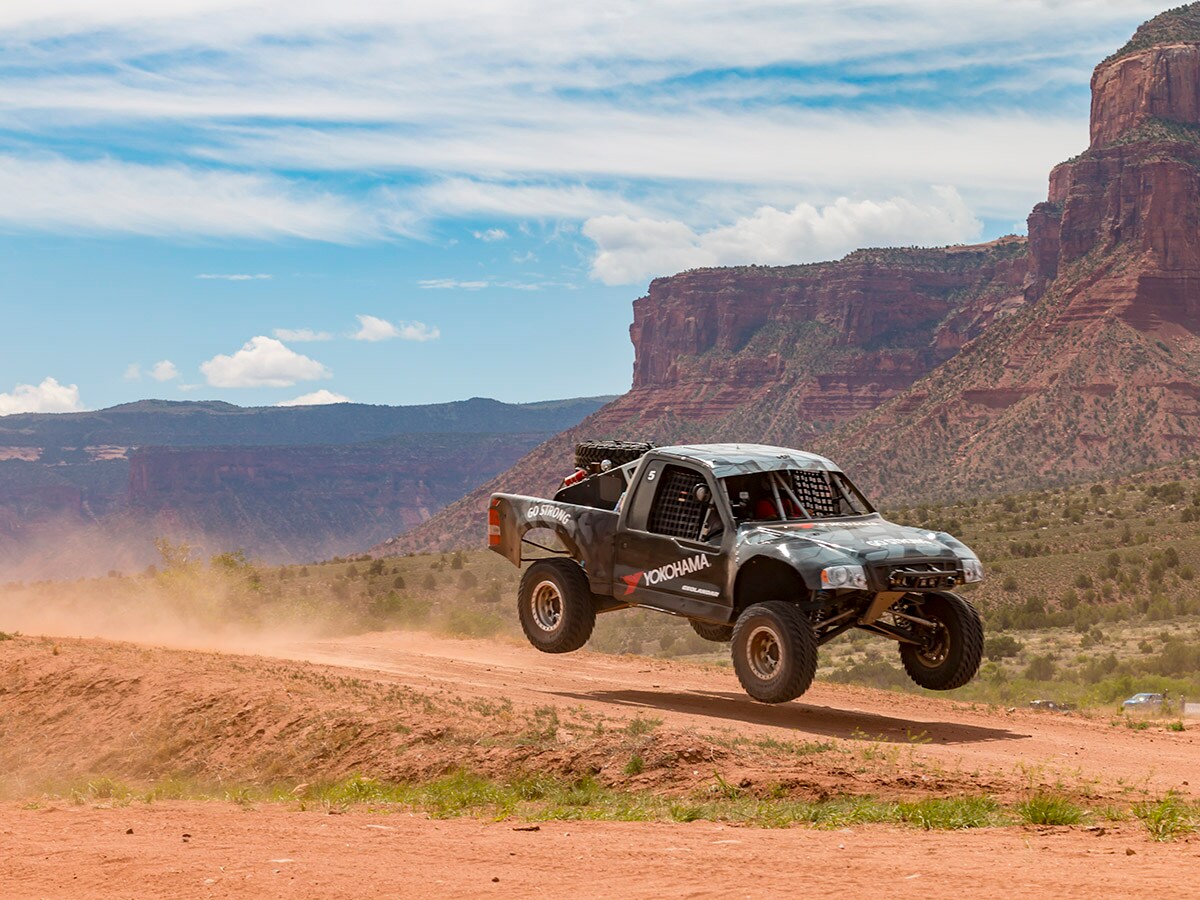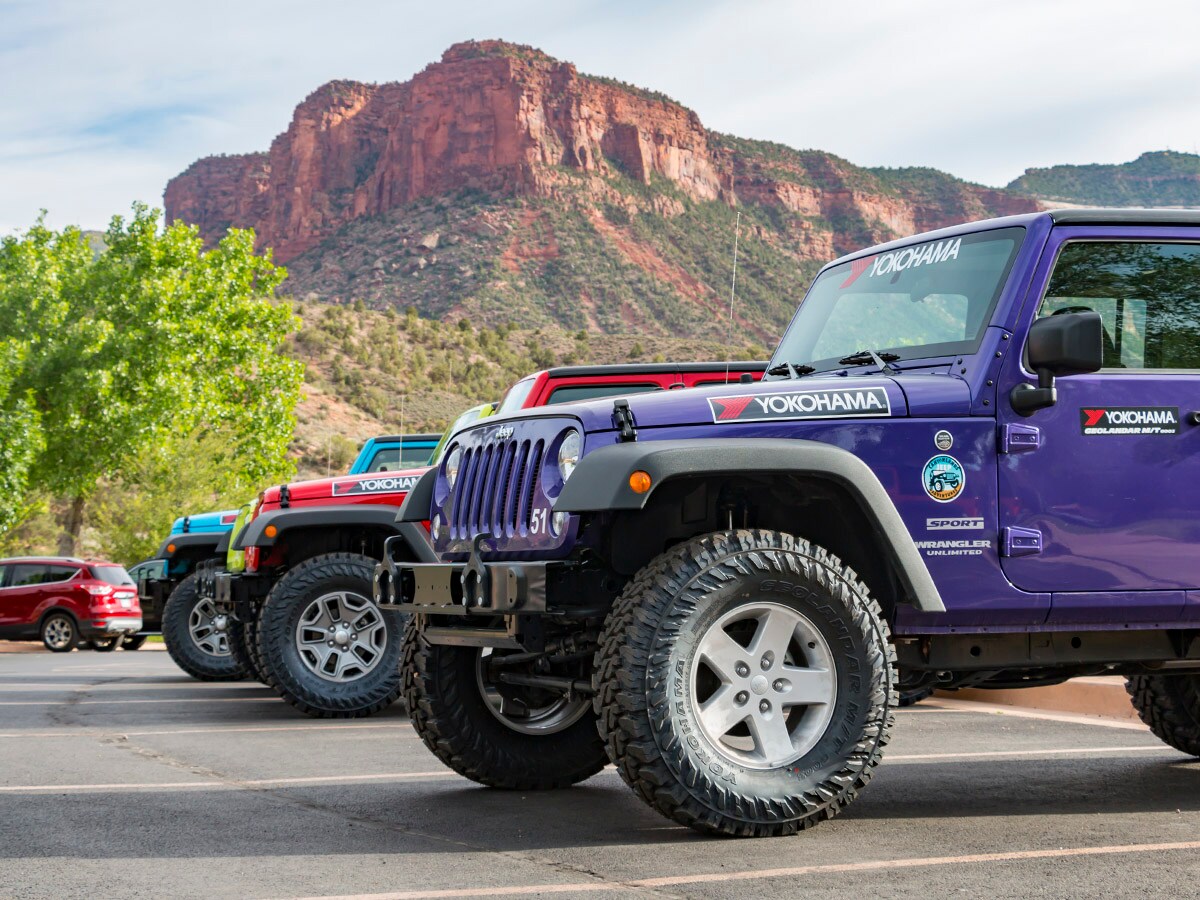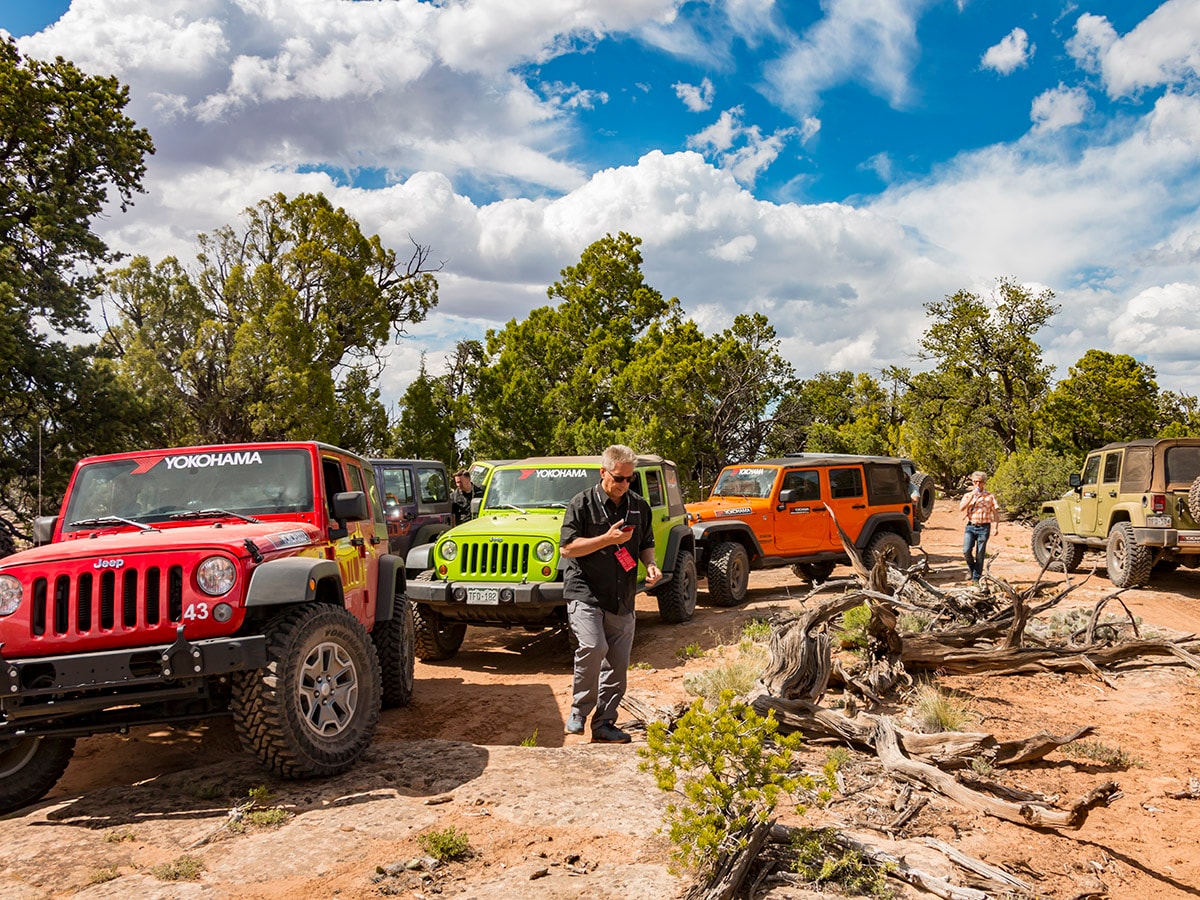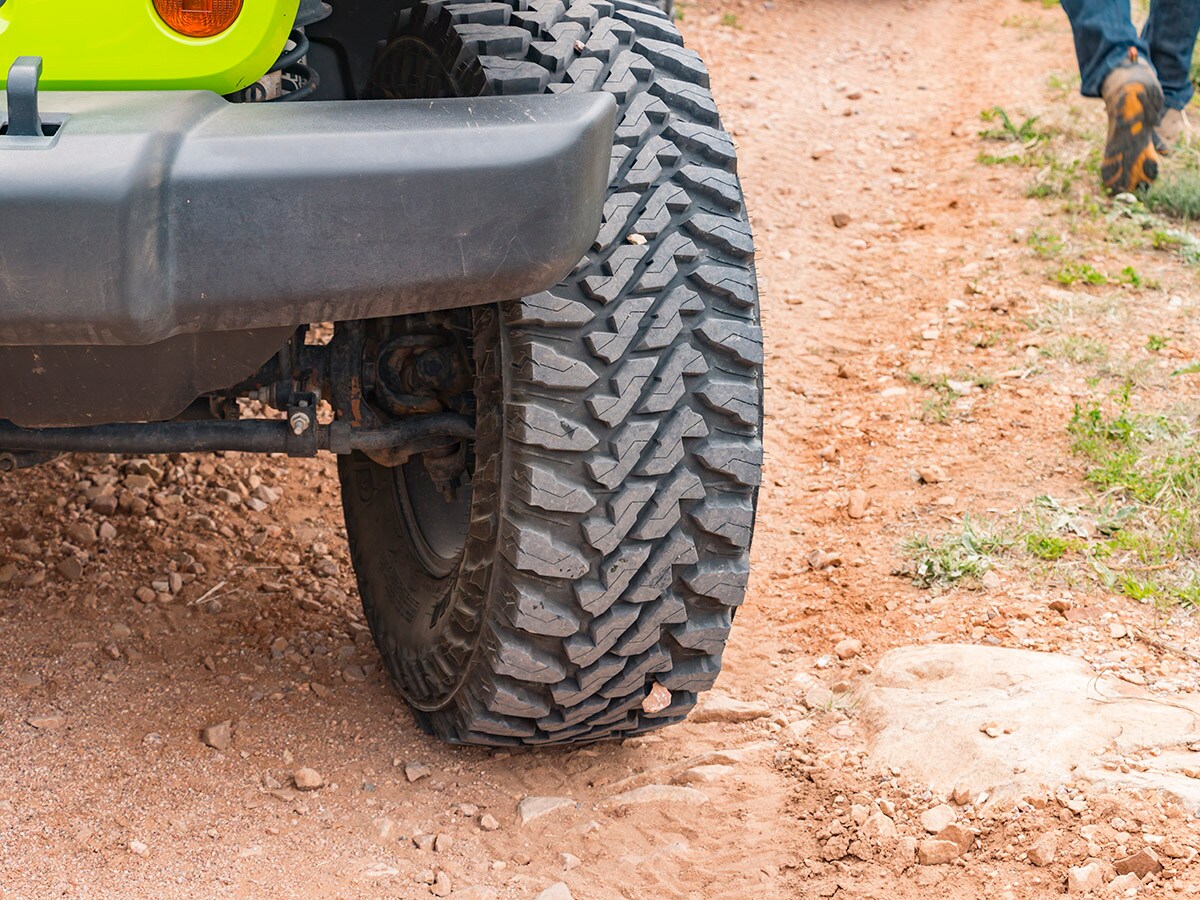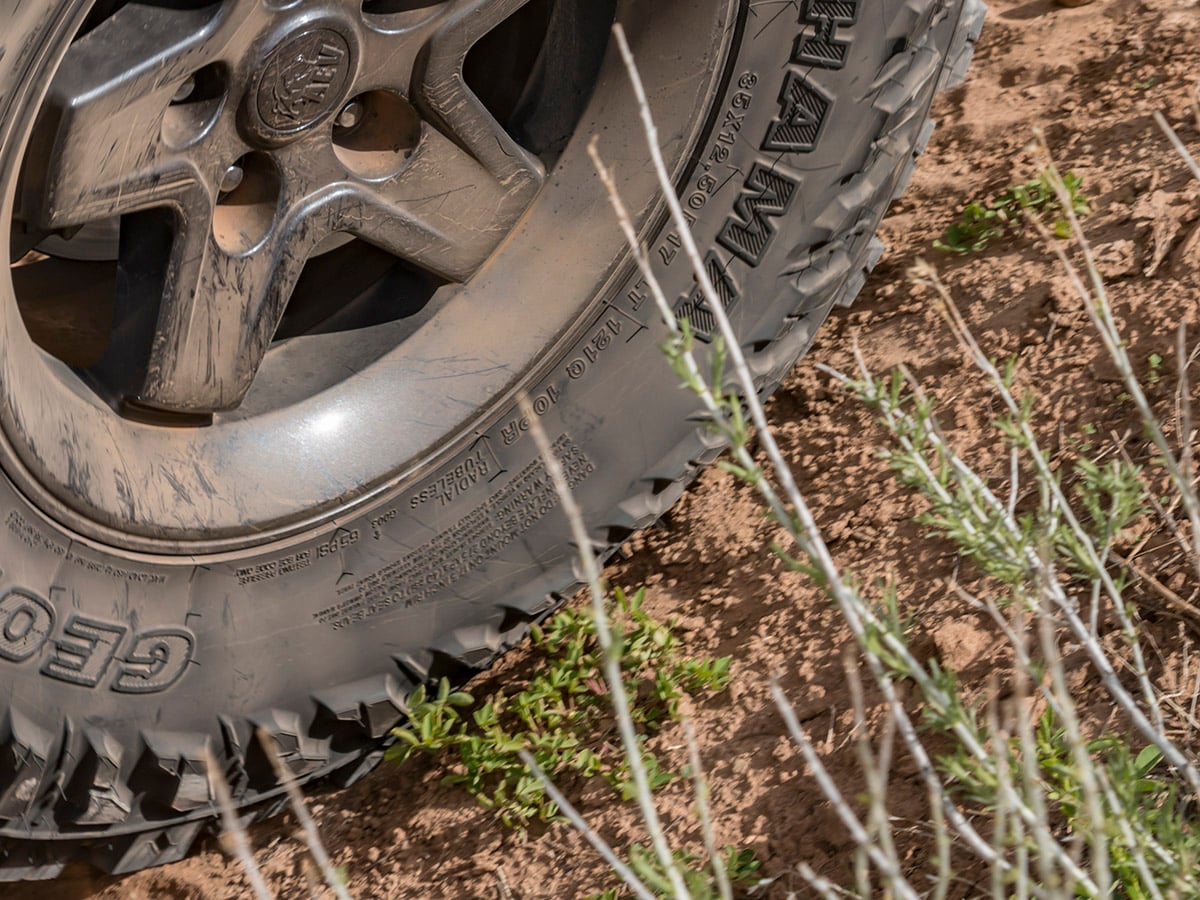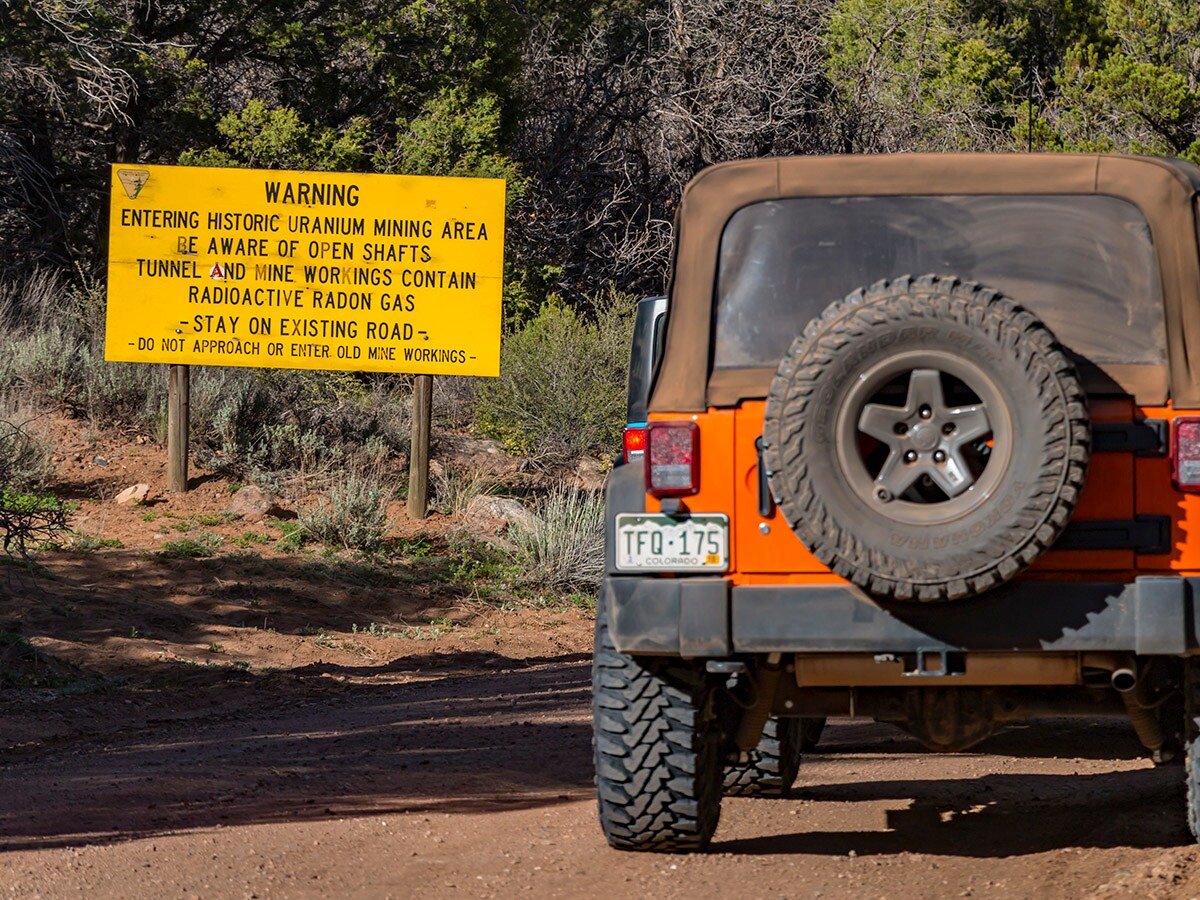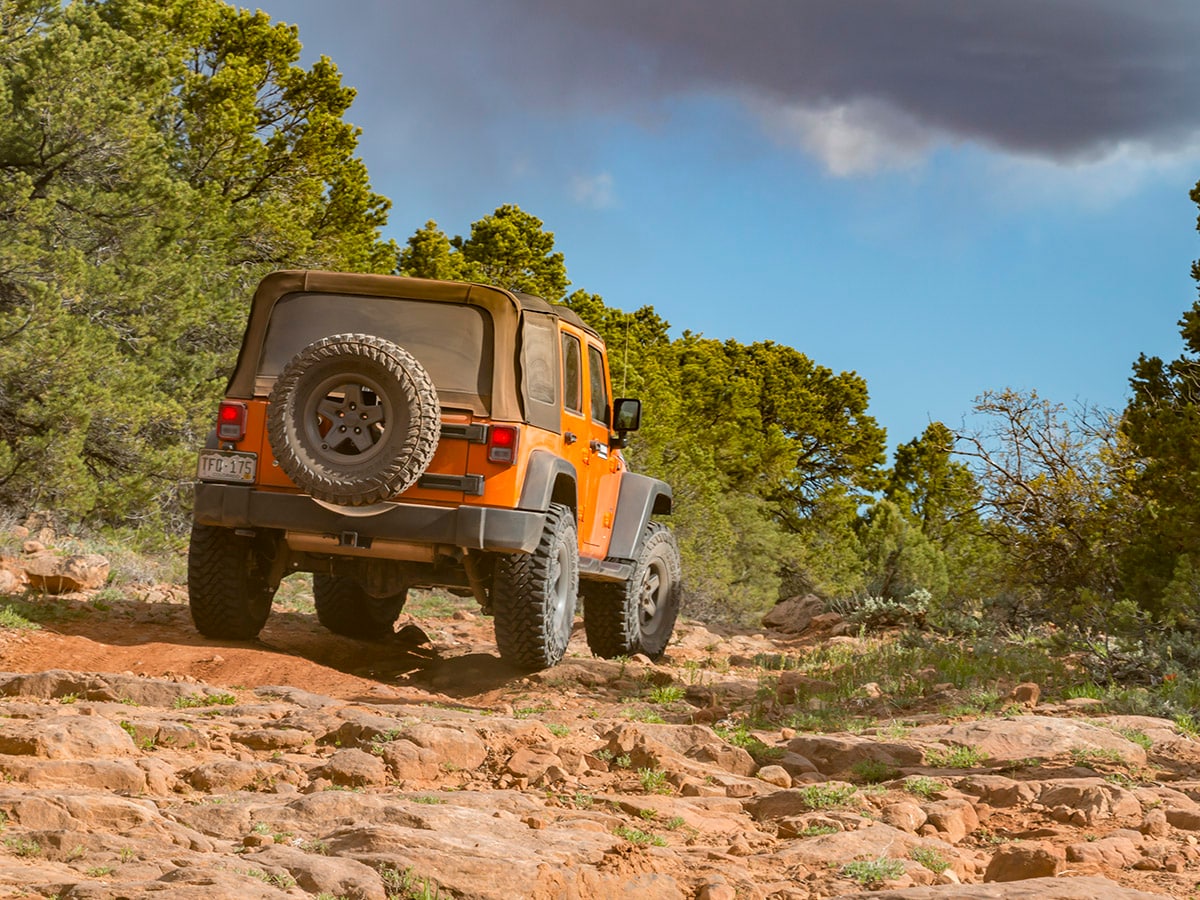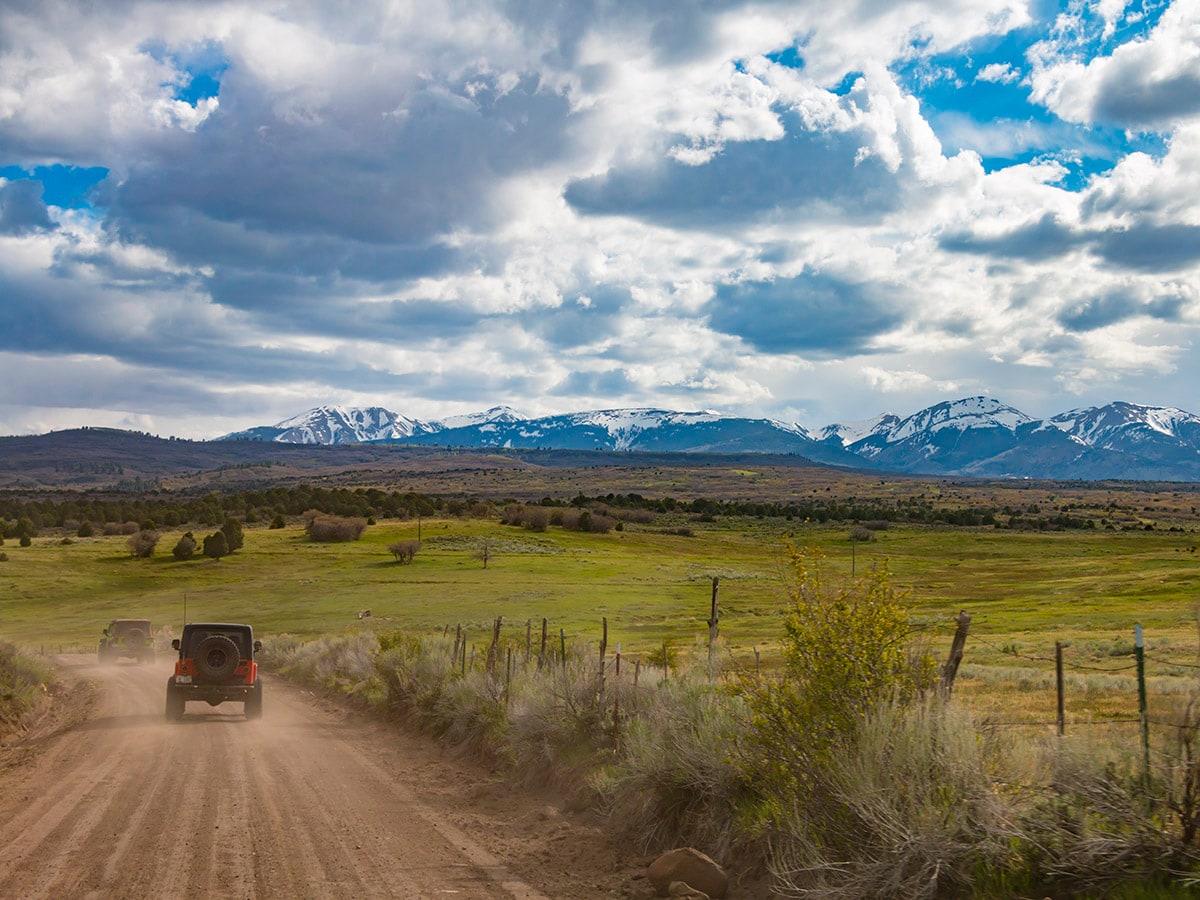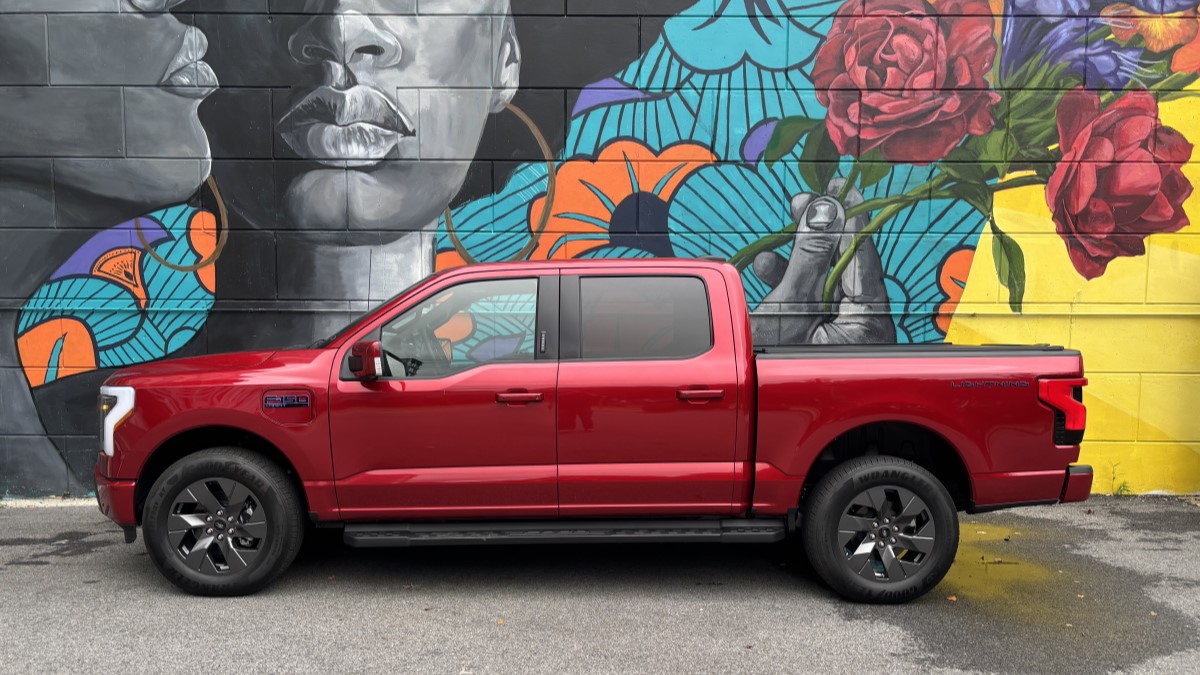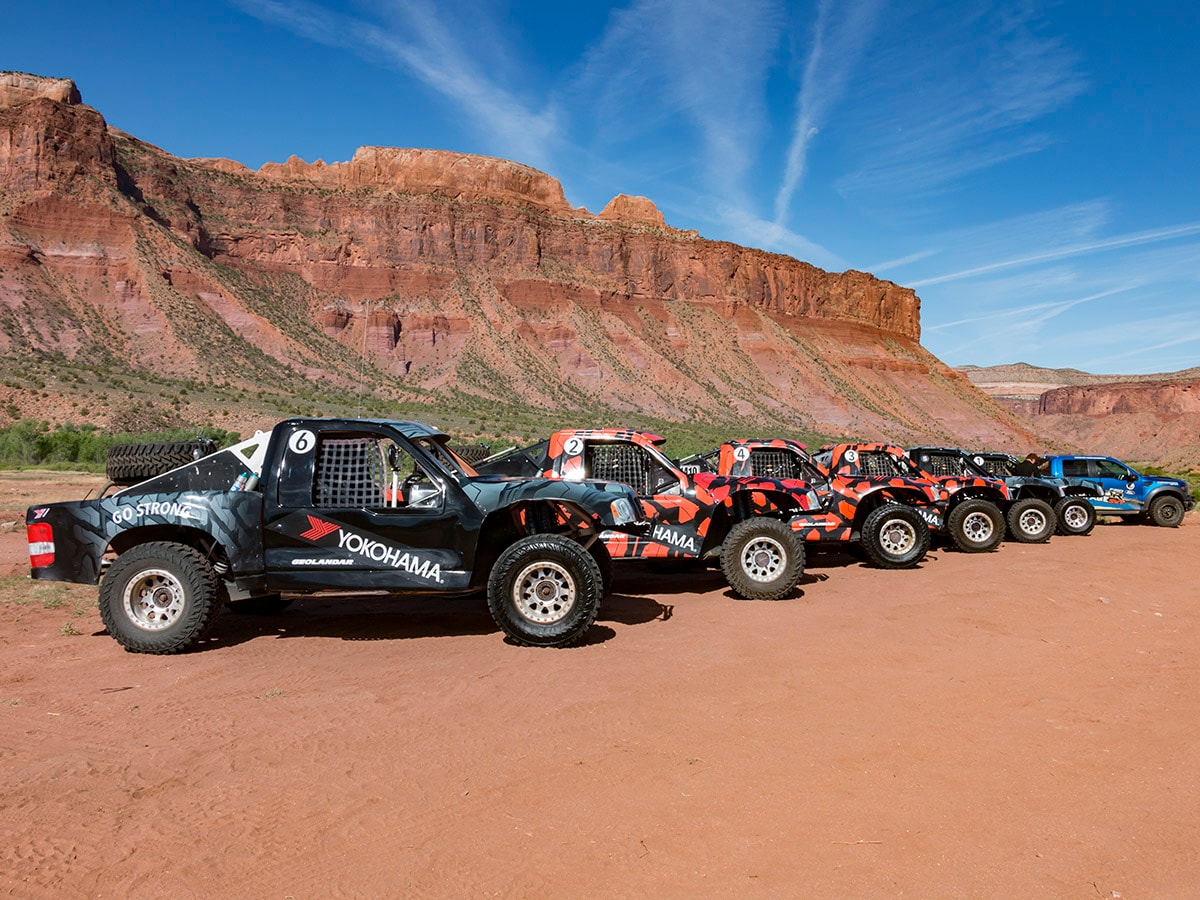
The view when flying into Grand Junction, Colo. is both spectacular and contradictory. On one side of the plane, you see a small town with golf courses, roads, McDonalds, and so on. On the other side of the plane is wide-open countryside, ringed by mesas and furrowed with canyons, with off-road trails snaking between the rocks and bushes.
It’s a stark contrast between wilderness and civilization, the kind of contrast facing off-road tire makers like Yokohama. Because, with few exceptions, you’re probably going to drive your vehicle to the trail on the same tire you’ll actually use on the rough stuff. With its all-new Geolandar G003 M/T, Yokohama aims to build a no-compromises harsh-terrain tire, but without making it undrivable on paved roads.
The reason we were in Grand Junction was because it’s near Gateway, Colo., where we’d be spending a day driving on the new tire. First, we’d hit an off-road short-course race track in race-prepped rear-engine off-road trucks, the kind of thing you’d see on the Baja 1000. Next up was tackling a series of off-road trails in a four-door Jeep Wrangler Unlimited, climbing the mesas surrounding us. All the vehicles, of course, would be equipped with the new Yokohama tires.
M/T means mud and terrain
The Geolandar tire line replaced Yokohama’s Super Digger tires in the 1990s, and has been a component of the company’s truck tire lineup ever since. This new tire occupies the M/T part of the market; that stands for Mud/Terrain, and it’s the most aggressive off-road tire type available. Why the big deal? Take a look at the Ford Raptor, Toyota Tacoma TRD Pro, and the brand new Chevrolet Colorado ZR2. All these trucks, not to mention the ever-present Wrangler, target the same hard-core off-road enthusiasts that the new Geolandar G003 does. It’s a sensible move for Yokohama; note that even for all its off-road capability, the Ford Raptor comes with asphalt-friendly A/T (all terrain) tires, and wouldn’t you know, there’s going to be a G003 M/T in exactly the same size.
At first glance, you’d think driving these new Yokohamas on the road would be like jogging in hiking boots, and they kind of are. The tread boasts wide gaps, all the better to dig into dirt (or rocks, or mud) to maximize grip. Think of the fingers of a rock climber’s hand, clinging to the slightest crevice on a sheer rock wall and you have the general idea of how these tires work to haul a Jeep through the rough stuff. There’s even tread on the sidewalls, and not just as "armor" to protect this often-vulnerable part of the tire. It provides actual grip when a tire slips into a rut for example, and the only part touching anything is the sidewall. Small bumps between the tread are there to help kick rocks out and maintain that grip. The extra space between the lugs is to help keep mud from clogging the tire and making it too slick to drive on. Inside the tire is rugged construction designed to resist puncture by sharp rocks, and for those who need it, the G003 is built to be compatible with "beadlock" wheels, which prevent the tire from popping off the rim in extreme circumstances.
Despite the rugged appearance, a brief drive down the highway showed they were actually decent on pavement. Within reason of course; this is no touring tire, and the big tread lugs sing louder the faster you go. But they’re not AS noisy as you might expect from something with such an aggressive tread, and at speeds below 40 mph the tires were relatively quiet. Even the slightly squishy feeling you get through the steering wheel from those big tread blocks squirming around on the pavement wasn’t too bad. The point is that while no M/T tire is going to be at its best on pavement, these are about as good as you could hope for while still retaining the kind of capability you expect from an off-road tire.
Off-road prowess
For the actual off-road stuff, it’s important to note that Yokohama didn’t provide any competitive tires or even stock tires for comparison. Of course, the off-road race trucks don’t have "stock" tires, and we admit, they were a bucketload of fun. Supplied by Vegas Off-Road Experience (VORE), the trucks were rear-engine purpose-built machines, not modified production trucks. After some instruction on how to drive them without breaking them (lift when jumping, for example), we were turned loose on the track. The tires managed the various terrains admirably, transitioning from hard-pack dirt to silt to sand without missing a beat. They also took multiple jumps without incident. We don’t know how well competitive tires would’ve behaved under the same circumstances, but suffice it to say, the Yokohamas were clearly up to the task put before them.
After that it was to the Jeeps and the mountain trails, with much the same result. The Jeeps were bone-stock with the exception of the tires, and there was never an incident where we felt grip was compromised in the least. At stock tire pressures the ride was certainly stiff, but these are Jeeps after all. As we drove up the John Brown Road, past old uranium mines to breathtaking overlooks, the tires made short work of every terrain thrown at us, including sand, hard rock escarpments, deep ruts and open grassy fields. Again, comparisons were impossible since there was nothing to compare the Yokohama to, but there was no lack of confidence in the ability of the tire to see us through.
Yokohama is not in the M/T tire game alone, of course. BFGoodrich, Goodyear, Cooper and many other companies make competitive tires. It would’ve been nice to compare them all back to back, but that may be another story for another time. But by all appearances, the new Geolandar G003 M/T has the chops to tackle its tough competition.
